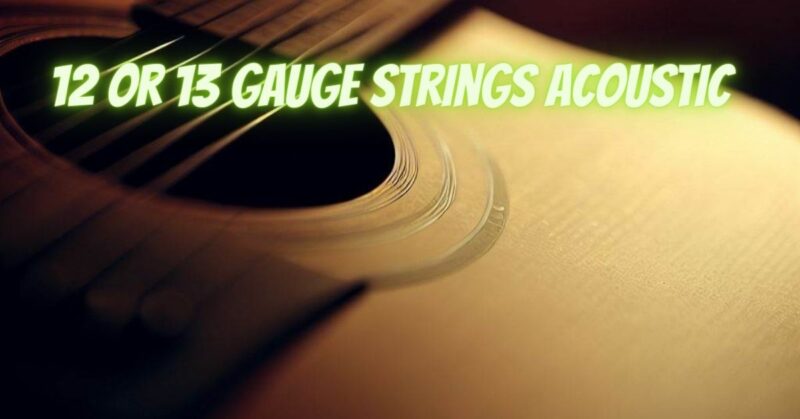Selecting the right string gauge for your acoustic guitar is a crucial decision that directly impacts your playing experience, tone, and comfort. Among the common options, the choice between 12 and 13 gauge strings stands as a significant consideration. Each gauge brings its own set of advantages and considerations. Let’s dive into the nuances of string gauge and explore the factors that can guide your decision.
Understanding String Gauges:
What is Gauge?
String gauge refers to the thickness of the strings on your acoustic guitar. It’s measured in thousandths of an inch. For example, a 12-gauge string is 0.012 inches thick, while a 13-gauge string is 0.013 inches thick.
Tension and Tone:
Thicker strings generally produce higher tension, which can affect the overall tone and projection of your acoustic guitar. Thicker strings often yield more volume and a warmer, richer tone due to the increased energy required to set them in motion.
Playing Comfort:
Thinner strings exert less tension on the guitar’s neck and are generally easier to bend, making them more comfortable for players who engage in extensive bending techniques or fingerstyle playing.
Factors Influencing the Choice:
Playing Style:
- 12 Gauge: If you strum a lot or use a mix of strumming and fingerstyle, 12-gauge strings might offer a balanced compromise between playability and tone. They are suitable for players who want versatility.
- 13 Gauge: If you prefer a heavier strumming style and want to emphasize a fuller sound with more projection, 13-gauge strings could provide the volume and warmth you’re looking for.
Tonal Preferences:
- 12 Gauge: These strings might be favored by players who seek a balanced tone that’s not overly bright or heavy. They tend to offer a clear yet warm sound.
- 13 Gauge: If you’re aiming for a pronounced low end and a robust, resonant tone, 13-gauge strings can bring out the depth in your acoustic sound.
String Bending and Fingerstyle:
- 12 Gauge: Players who engage in frequent string bending and intricate fingerstyle playing might find 12-gauge strings more accommodating due to their lower tension.
- 13 Gauge: If you prefer a more robust attack and are less concerned about extensive string bending, 13-gauge strings could suit your playing style.
Guitar Setup and Preference:
The choice between 12 and 13 gauge strings also depends on your guitar’s setup and your personal preference. The tension exerted by thicker strings can affect neck relief, action, and intonation. It’s advisable to consult a professional luthier or technician when making significant changes to your string gauge.
Experimentation and Adaptation:
Keep in mind that string gauge choices are not set in stone. It’s entirely acceptable to experiment with different gauges to find the one that resonates best with your playing style, guitar, and musical goals. Additionally, it might take some time to adapt to the feel and tension of new strings, so give yourself time to adjust before forming a final judgment.
Choosing between 12 and 13 gauge strings for your acoustic guitar is a balance between comfort, tone, and playability. Carefully consider your playing style, tonal preferences, and the type of music you enjoy. If possible, try both gauges to determine which one aligns with your musical vision. Remember that there is no one-size-fits-all answer, and the ultimate goal is to find the string gauge that enhances your playing experience and brings out the best in your acoustic guitar’s voice.


